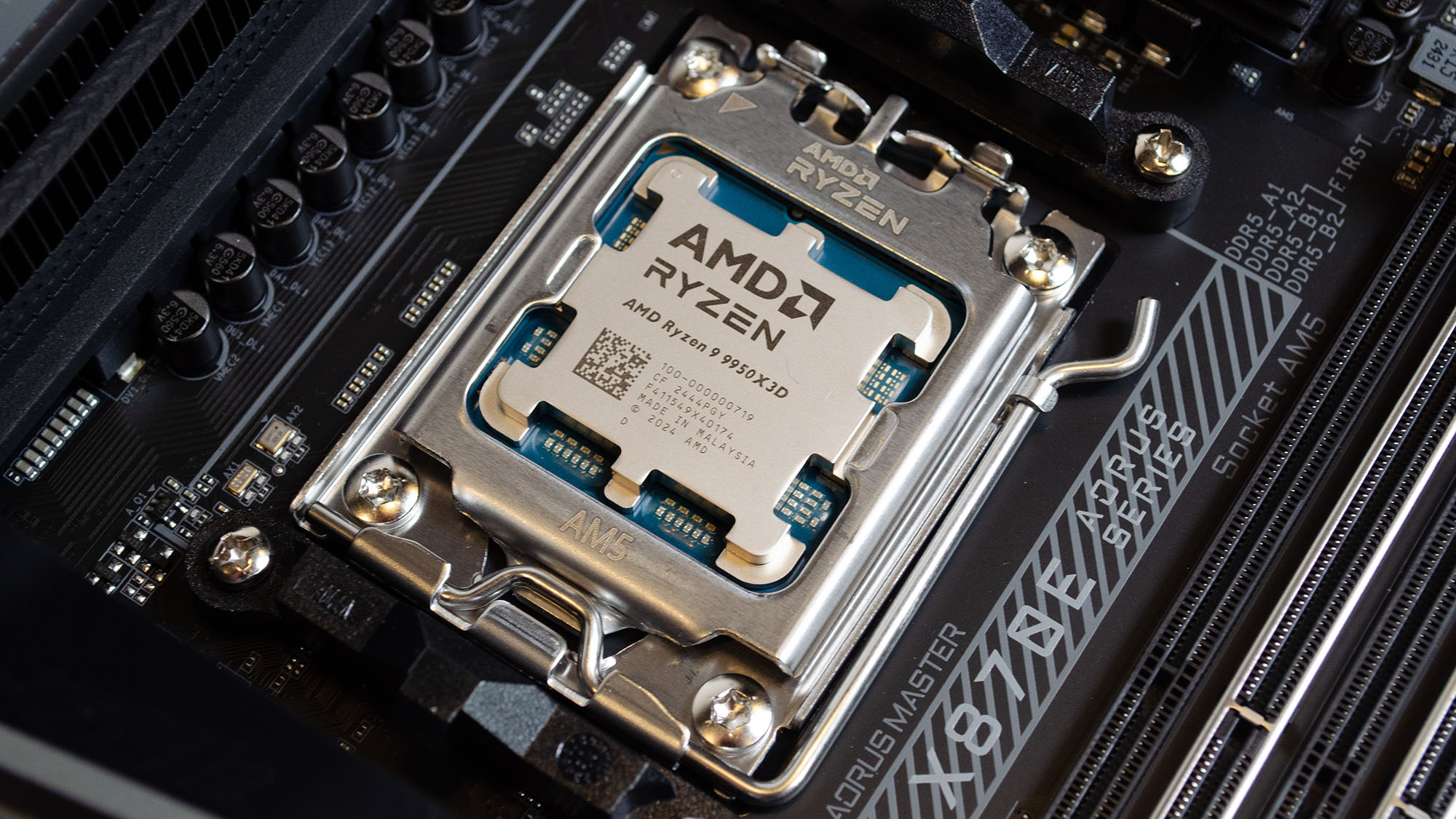- AMD’s Ryzen CPU burnouts have been an issue for some time
- Team Red has now clarified that this is a problem because some motherboards don’t run with AMD’s recommended values
- Instead they push too hard with power and voltage – and burnouts are still reported on a daily basis
AMD has officially commented on the chip-destroying burnouts that have affected a small number of its Ryzen processors, and has effectively laid the blame at the feet of motherboard makers – to a point, anyway.
Tom’s Hardware noticed an interview with AMD execs David McAfee and Travis Kirsch conducted by Quasarzone (a South Korean tech site) in which Team Red was questioned about the burnout issue pertaining to Ryzen chips (3D V-Cache or X3D models, including the Ryzen 9800X3D), and mainly (but not exclusively) affecting ASRock motherboards.
Bearing in mind this is a translated article – so we need to be careful around the interpretation – Quasarzone noted that CPUs in AM5 motherboards have been “experiencing socket burnouts” and that “some users are still reporting these symptoms”. The tech site then asked what AMD’s position and response was regarding the issue.
AMD replied to say (again, remember this is a translation): “This issue arises because some ODM BIOSes do not adhere to AMD’s recommended values.”
The term ODM refers to the motherboard maker (original design manufacturer), and what this is essentially saying is that those manufacturers aren’t sticking to AMD’s stock values (around power, voltage, and more) with their boards. In other words, these companies are pushing harder than they should, which could cause a problem.
It’s not a definitive conclusion here, mind, because the execs go on to say: “AMD … offers a wide range of combinations, and also supports PBO [AMD’s automated performance boosting feature] and overclocking. This means there are a vast number of possible scenarios. While this is a complex issue, we are working closely with our partners to resolve issues and further evolve the platform.”
So, it’s a complex problem to unpick, and AMD underlines that it’s working with motherboard makers to resolve any problems.
The execs also mention that it’s very much recommended that any AM5 motherboard owner updates to the very latest BIOS version, which is sound advice for any motherboard in fairness. (The latest finished release of the BIOS, I should clarify – do not attempt to use new versions that are still in beta testing).

Analysis: guessing game
So, this isn’t a crystal-clear statement from AMD by any means – and translation complications must be taken into account (yes, I’m banging on about that a bit, because it’s an important nuance) – but there is a clear enough pointing of the finger in the direction of motherboard makers pushing too far with their settings.
As mentioned, ASRock motherboards have been particularly in the firing line as the most commonly reported hardware maker to be affected (by a long way) – but other vendors have been hit by incidents of CPU failures too.
While ASRock initially blamed a “memory compatibility issue present in earlier BIOS versions” and pushed out a BIOS update to fix that, this didn’t do the trick in curing burnouts. As Tom’s Hardware points out, a later BIOS update that arrived in May 2025 tweaked various PBO settings and this (finally) smoothed over most of the issues – if not quite all of them.
Sadly, there are still reports of Ryzen X3D CPU burnouts trickling in via Reddit on a daily basis, so this is a thorny one. Has ASRock still got work to do in terms of honing its BIOS to prevent these incidents? Or might this be a case of chips that have already been pushed too hard, for too long, suffering from the damage caused under the hood and finally giving up the ghost (with the latest BIOS update not being able to save them, as they were too far gone)?
There’s still too much of a guessing game going on, frankly, and it’s an unfortunate situation for both AMD and especially ASRock. Although it’s not like Intel hasn’t had worse problems – by which I mean the instability fracas with Team Blue’s 13th and 14th-gen processors (that’s been quite a saga).
